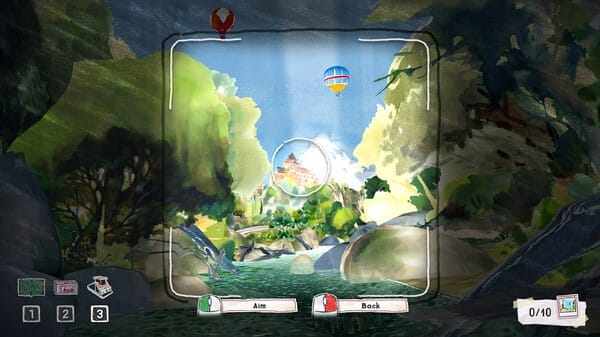The Parent's Guide to Picking Video Games for Kids
Learn how to choose age-appropriate video games that balance fun, creativity, and learning.

Their glowing eyes paralyzed me as they floated closer, orange bodies flickering to life with every panicked heartbeat in my chest. What I'd seen on the screen when I walked through the living room earlier that day had left its mark, and I, a child of 5 years old, would not be getting a wink of sleep as I watched the jack-o-lanterns of my imagination in absolute terror.
You really don't want to make that same mistake with your own child, and you're determined to pick out a video game that won't leave them scarred, scared, and crawling into your bed before sunrise, am I right? Not all video games are made with kids in mind, and even some colorful, cartoonish games can have themes that might not be suitable for younger players.
These five guidelines should help you make an informed, safe choice!
Age-Appropriate Content
With so many options out there, choosing the right game can feel overwhelming. Should it be educational? Cute and quirky? What about online interactions? Here’s what to look for when selecting a video game that’s fun, age-appropriate, and engaging for your child.
Check the rating. Many games come with an ESRB rating (North America) or PEGI rating (Europe) that gives guidance on whether a game is appropriate for a certain age group. I will cover this further later on, but for now, E for everyone should be acceptable for the whole family, with E10+ being for 10 and over.
Look at the themes. Is the game lighthearted and fun, or does it include scary or intense moments? Even a game rated E (Everyone) can have themes that some kids might not be ready for. One such game is Dordogne, that I highly recommend as it is beautiful, has simple controls, and tells a lovely story about remembering family that's passed on.
Consider reading level. Some games require a lot of reading to understand what’s happening. If your child isn’t reading fluently yet, a game with full voice narration is a better choice.
💡 Tip! Even games rated for kids can have surprising elements—search YouTube or the game's web page for trailers or gameplay videos to get a feel for the game before handing over the controller.

Easy-to-Use Controls
If your child is new to gaming, complex controls can quickly lead to frustration. Games with simple movement, forgiving mechanics, and clear tutorials make for a smoother experience.
Look for games with basic mechanics. For younger children, games that use simple directional movement and one or two buttons are best.
Try out assist modes. Some games have “easy” or “beginner” settings that make things more accessible, like Super Mario Wonder’s Helper Mode or Kirby’s automatic floating to prevent falls.
Test the controls yourself. If the game requires precise timing, fast reflexes, or complex button combos, it is likely too tricky for a younger child.
Engaging Gameplay Without Frustration
A good game should be challenging enough to be fun but not so hard that it leads to tears. Some kids enjoy trial-and-error gameplay, while others prefer games with clear guidance.
Avoid heavy penalties for failure. Some games let kids try again with little consequence, while others send players back to the start after every mistake.
Look for built-in hints. Puzzle and adventure games should have some way of offering guidance when kids get stuck.
Consider the pace. Fast, competitive games can be exciting, but some kids do better (meaning less meltdowns) with less stimulation and more adventuring.

Solo Play vs. Multiplayer
There are games that are designed for solo play, while others are better for family-friendly co-op or online multiplayer.
For younger kids: Games with local multiplayer (couch co-op) allow family members to play together. (Super Mario Party Jamboree is a great example.)
For independent play: Look for single-player experiences that don’t require help from an adult. (Paw Patrol: On a Roll! is an excellent noob game.)
For online multiplayer: Be very cautious of games with open chat features. Some online games allow voice or text chat with strangers, which usually isn't appropriate for young kids, unless you want them swearing like a sailor.
💡 Tip! If choosing an online game, check for parental controls that limit interactions with others.
Balancing Fun & Learning
Video games can be more than just entertainment—they can also help with problem-solving, creativity, and motor skills. Choose games that offer more than just bright colors and weird noises.
Games that encourage creativity. Open-world games like Lego Duplo World or Minecraft (Creative Mode) let kids build on their own and experiment.
Puzzle-based games. Games like Trine 4 and Dordogne gently introduce logic and critical thinking.
Reading-friendly games. Story-driven games can help kids practice reading comprehension in a fun way!
TL;DR:
The best video game for your child should be fun, engaging, and well-matched to their skill level. Whether they’re just starting out or ready for a challenge, remember to consider these key takeaways:
- Appropriate for their age and reading level
- Simple, intuitive controls
- Encouraging, low-frustration gameplay
- The right mix of solo or multiplayer fun
- A balance of creativity, learning, and enjoyment
With the right game, kids can build confidence, develop problem-solving skills, and, most importantly, sleep through the night! Ah... -and have a great time, is what I meant to say.
To discover more age-appropriate games, head over to the blog.

